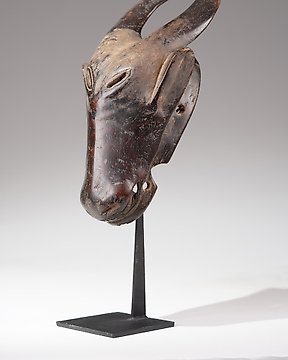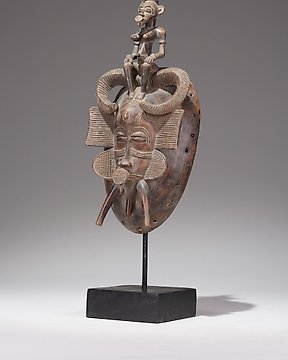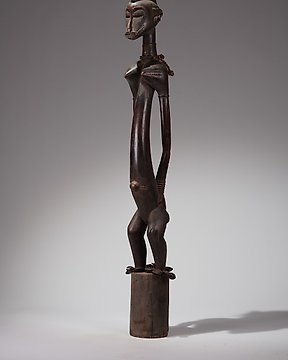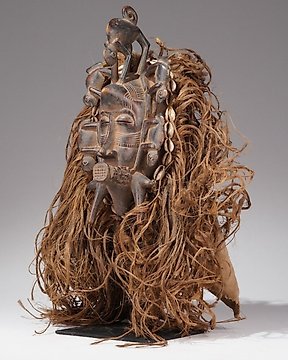Senufo Maternity - Senufo - Côte d'Ivoire
No. 81551451

Horse with Equestrian figures - Senufo - Côte d'Ivoire (No Reserve Price)
No. 81551451

Horse with Equestrian figures - Senufo - Côte d'Ivoire (No Reserve Price)
Senufo Equestrian Figures, elegantly carved wooden equestrian figure with seated rider and stylized horse. The male rider having a small prognathous head with scooped facial plane. His face with ovoid, downturned eyes bisected by a small mouth, He wears a small hat and has a powerful neck. Rounded, strong shoulders curving into the upper arms. Fine backwardly arched torso with protruding abdomen connecting to short, bent legs with small feet. The horse’s head with full carved face having rounded eyes and open mouth. Overall exceptionally fine dark brown patina.
The horse symbolizes power. In the late nineteenth century, warriors on horseback were a frequent sight in Senufo villages. The memory of these powerful horsemen has left its mark on Senufo art. Ridden by foreign conquerors or local rulers, horses are synonymous with aggression, power, and wealth in Senufo art and culture… Poro, an initiation society that is mandatory for all Senufo men, provides the framework and hierarchy for social, political and religious activities in Senufo villages. Sandogo, the woman’s society found in all Senufo communities, is concerned with maintaining good relationships with the spirit world and ensuring the propriety of marriages in the human one. As is typical of Senufo wood sculpture, the play of convex and concave curves provides movement and vitality to these images. The riders sit proudly, often with exaggeratedly erect posture and broad curved shoulders. Often the prognathic jaw echoes the forward curve of the torso, adding to the figures assertive expression. Riders are shown nude but often wearing the hats and amulets that are associated with the Muslim peoples of the West African savannah. The importance of equestrian imagery in Senufo art, reflects respect and desire for power and domination by both victors and victims.” (George Chemeche, The Horse Rider In African Art, London, 2011).
Provenance: private collection tropical doctor.
You might also like
- 16+
This object was featured in
How to buy on Catawiki
1. Discover something special
2. Place the top bid
3. Make a secure payment








